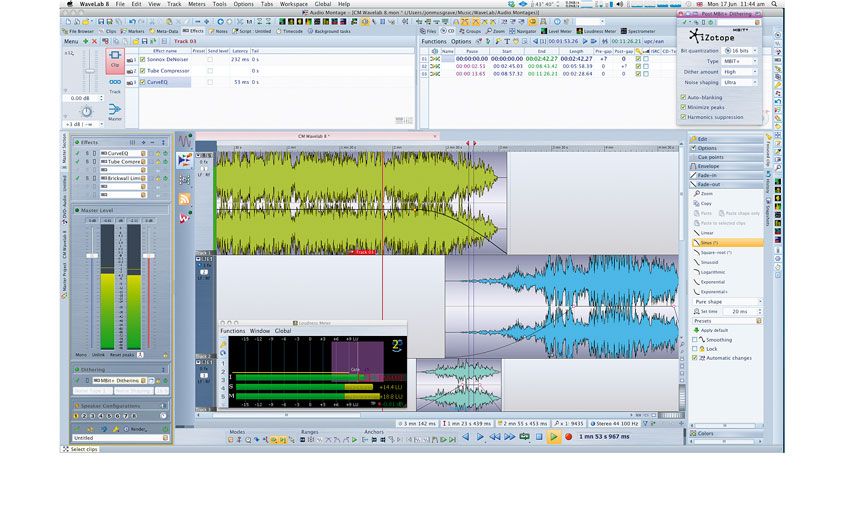

These can include simple, routine or trivial things like cleaning up a favorite CD so that the applause doesn’t disrupt your listening experience. There are just certain things you need to do from time to time for which you instinctively reach for the audio editor in preference to a DAW, even when the DAW could accomplish the same thing. If you have a DAW but also have an audio editor program, then you probably don’t need to be convinced that it’s mighty handy to have that audio editor at your disposal. We’ll spend some time later in comparing the feature sets. Likewise, features not likely to be required by the home producer, such as surround DVD-Audio production will require the big guns. If you used audio editing software, say, six or more hours a week, then some of the heavy-lifting capabilities of WaveLab (compared to Elements) could be readily cost justified. On the other hand, WaveLab is there for commercial sound studios, mastering shops, and the like. The good news is that Elements has plenty to offer the home producer, and in fact, it’s so rich in functionality that there’s little in WaveLab that would be sorely missed for application at that level. Elements, at one fifth of that price, is something most home producers and serious hobbyists would find a lot more palatable. At $500 USD, WaveLab is not a purchase to be lightly undertaken.

We’ll be looking at both of these capabilities and much more.īut let’s start by establishing who would be better suited for which version. On another front, anyone doing sound capture for the creation of sample sets will also be far better off when advanced looping capabilities are at hand. Most significantly, the Montage capability can be employed for easy CD track layout, track “leveling” and CD organization. The WaveLabs can do a few things you either could not do in your DAW without much difficulty, or could not do period. The same is true of DAWs and audio editing software.īut it doesn’t stop there. Kitchen blenders and food processors have some overlap, but either can do things the other cannot, or can at least do certain things much more effectively. So why would a DAW owner want to even think about parting with funds to buy a different program that can also do audio editing? One justification would efficient workflow. These have abundant capabilities for editing audio. Most of our readers probably own one or more full-featured DAW programs: Cubase, Logic, SONAR, etc. Elements is very impressive and capable in its own right. But let me make something clear from the start, Elements may offer only a subset of WaveLab’s capabilities, but it’s far from deserving of a “lite” designation. For clarity in what follows, “WaveLab” will refer to the full-featured version, “Elements” the “lite” version, and “the WaveLabs” will mean either or both. In this review, we’re going to look at two impressive audio editing programs from Steinberg: WaveLab 8.5 and its “lite” version, WaveLab Elements 8. Many of us use highly capable DAW software, so why would we need another, different audio editor program? Find out why here.


 0 kommentar(er)
0 kommentar(er)
